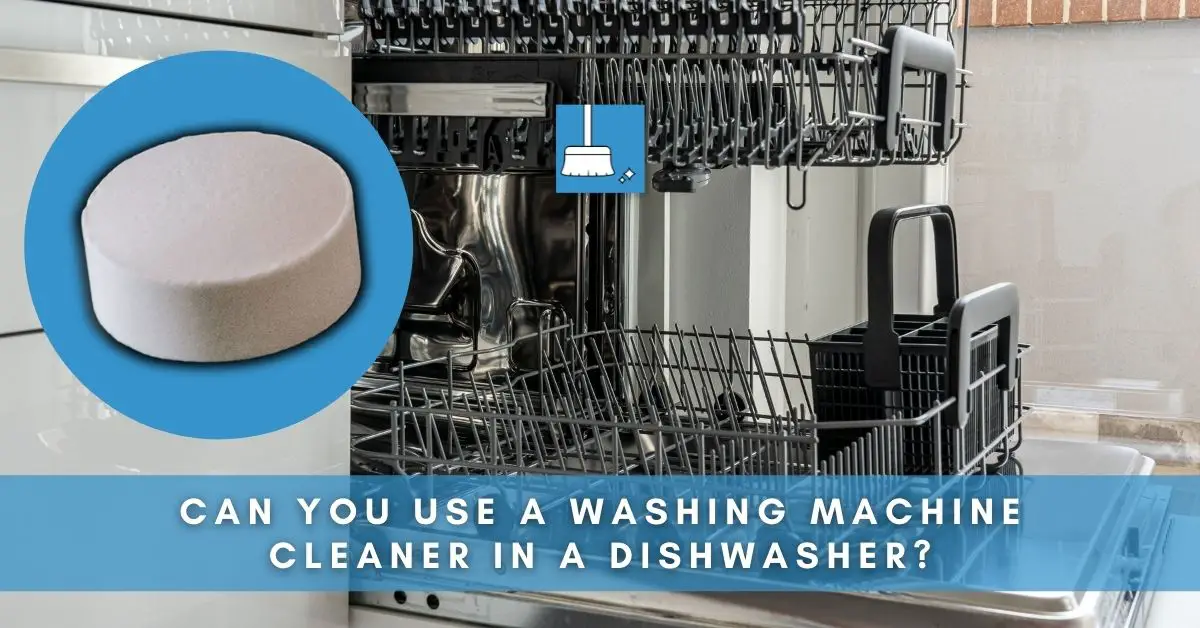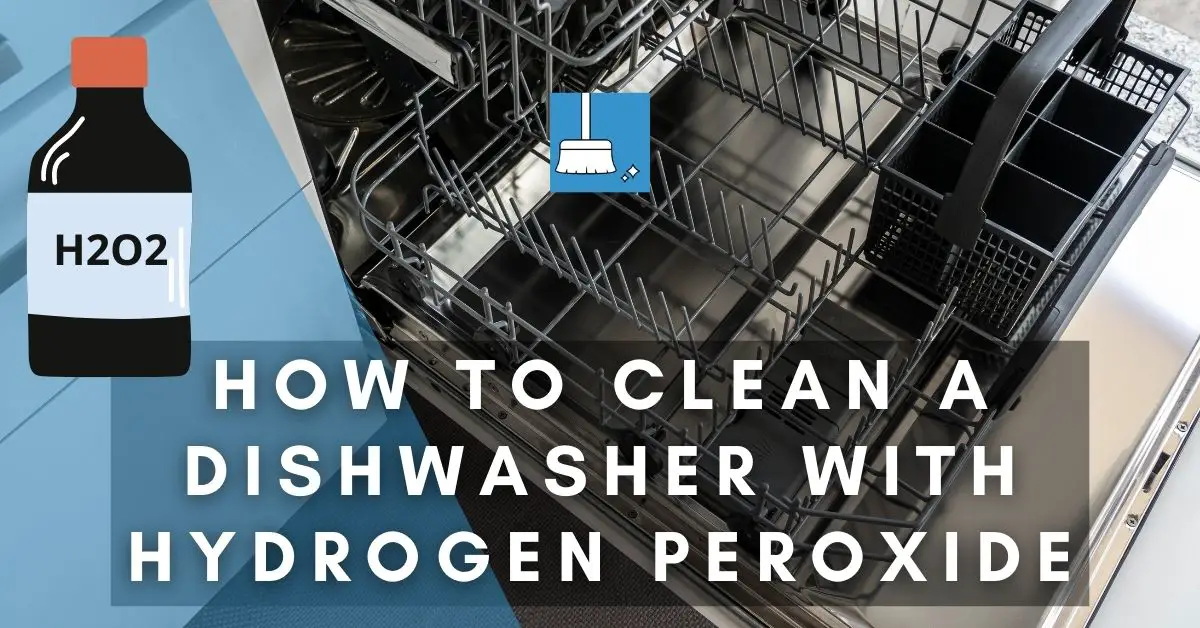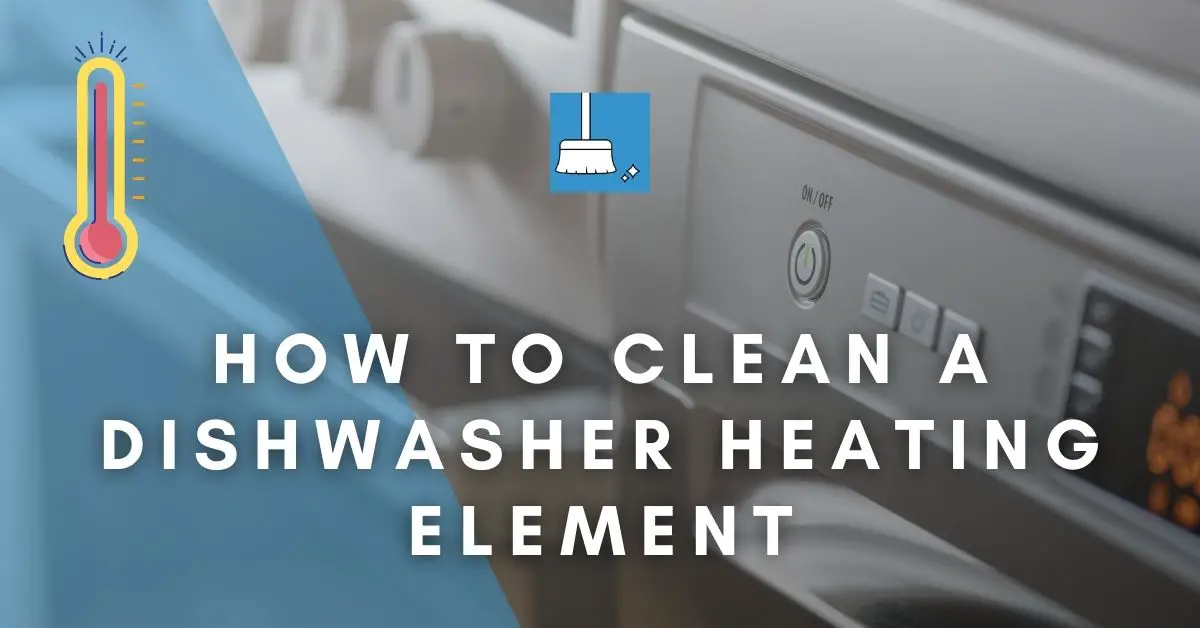Dishwashers and other appliances do need regular cleaning. While you may think it is self-cleaning as it is washing utensils, residue tends to build up. This residue and grime need to be flushed out.
Manufacturers of these machines usually recommend the right product to use for cleaning and maintenance.
In this article, we will look at if you can use a washing machine cleaner in a dishwasher (whether it is used to clean the machine or used to clean dishes), and other cleaning alternatives available.
Can You Use a Washing Machine Cleaner in a Dishwasher?
Cleaners and detergents are made for a specific purpose and should not be substituted as their chemical composition differs. It is not prudent to use washing machine cleaners or detergents in a dishwasher as the unsafe chemical ingredients sometimes can be ingested if left on the dishes due to improper washing. Using any non-recommended cleaner will also nullify your warranty.
In the context of cleaning a dishwasher, we’ll look at the possibilities of using both cleaners used to clean the washing machine itself and detergents/pods used to clean laundry.
Using Washing Machine Cleaners (Such as Affresh, Tide, Oxyclean)
The washing machine cleaners are of a different chemical nature designed to clean only a washing machine.
In washing machine cleaners, there are basically different ingredients. These are:
1- Sodium Percarbonate (Oxygen bleach): For removing grime and odor
2- Sodium Carbonate (Washing soda or soda ash): For cutting grease and softening water
3- Polyethylene Glycol: To keep the tablet together
4- Glucono-delta-lactone: To keep the tablet from damaging in the package
The main ingredient (Sodium Percarbonate) is the main reason why washing machine cleaners should not be used to clean dishwashers.
Ingestion of this should be avoided at all concentrations. Since there is a possibility of residues being left behind on the dishes, it would be a risk to use this in dishwashers.
Also, dishes should also not be washed with this agent as they will become darker over time as the unremoved soil will oxidize.
It should be noted that Sodium Percarbonate is also present in dishwasher pods but it is not the main ingredient but an intentionally added one. Having said that, this ingredient has the said disadvantages.
Using laundry Detergents, Dishwashing Liquid & Dishwasher Pods in a Dishwasher
Whilst all detergents are created to get rid of dirt, grease, and grime, they are specifically formulated to clean the product according to its nature and use.
In case laundry detergent is used in the dishwasher for cleaning utensils or even just the machine, the following can occur:
1- Laundry detergents produce more suds. This is because dishwashing liquid is designed to be foamier than the pods. This will cause leaking from the door seal and vent seal. The dishwasher will need to be rinsed again while empty, before using it again to wash dishes.
It may also damage the drainpipes.
2- If laundry pods do not dissolve, and consequently are not rinsed off properly from the utensils, they can be toxic if ingested.
3- These detergents also contain scents, softeners, and brighteners that should not be heated because they will mix in the air and you will breathe these in.
4- If the dishwasher cannot efficiently rinse off the detergent from the inside of the dishwasher, the chemicals can end up on the utensils in the next cycle.
If laundry detergent is used in the dishwashing machine accidentally, leave the utensils in and run a short hot cycle with the no-soap option. Note: It is advisable to deep clean the dishwasher and inspect it carefully to check if any damage has occurred.
Dishwashing Liquid
The chemicals in the detergent used for handwashing dishes are gentler to the skin, but it is not an ideal product to use in the dishwasher.
Dish Soap will create a lot of soapy froth in the dishwasher and that will flow out of your dishwasher onto the floor.
Dishwasher Pods
These pods contain strong chlorine bleach and so are not recommended to use while hand-washing dishes.
The PH levels of dishwasher pods are higher, as this helps to get rid of grease and food. They also contain surfactants (surface-acting agents) which remove and disperse the dirt away.
Dishwasher pods produce fewer suds than laundry detergents. The fragrance is not long-lasting as compared to laundry detergents.
Dishwasher pods are suitable for cleaning dishes in a dishwasher. For each standard load, you hould use one pod. You should add one more if the load is full.
Alternatives To Using Dishwasher Pods
Since you want to use a washing machine cleaner in your dishwasher, it probably means you ran out of the right stuff to use in your dishwasher.
Suppose you run out of dishwasher pods, then you can use the following substitutes:
1- Distilled White Vinegar: Fill a bowl and place it on the top rack and run the machine as usual. The water jets will ensure the even distribution of the vinegar.
2- Baking Soda: Fill the detergent holder with baking soda and run the cycle as usual.
3- Lemon Juice: Use half a cup and make sure there are no seeds or pulp.
4- Washing Soda: This is sodium carbonate. Fill the detergent cup and run the cycle as normal.
While these substitutes will leave your dishes clean, they should not be used on a long-term basis.
How to Clean the Dishwasher? (With Things at Hands!)
It may be obvious to think that because the dishwasher is cleaning dishes, it also self-cleans and that the insides of the machine would be clean. With time, there is a build-up of residue, grease, bits of food, and dirt. Mildew can also form in the machine.
If it is not cleaned and maintained, efficiency is reduced. Eventually, your utensils will not be clean either.
The best way to clean the dishwasher is by following the instructions on the cleaner packaging. The manufacturers will always recommend commercial brands to clean dishwashers. Allow the machine to air-dry afterward.
Here we are showing you a simple method that uses common household items! All these items are inexpensive and usually found in the house and work well for a dishwasher and a washing machine.
YOU’LL NEED
1- White vinegar
2- Baking soda
3- Old toothbrush to clean certain areas
4- Sponge and cloth
STEPS
STEP 1: Remove the racks and holders, place them in warm soapy water and wash them well. Let them air dry.
STEP 2: Remove the filter and soak it in warm soapy water. Then, gently scrub it clean.
STEP 3: Place the filter back in the machine.
STEP 4: Wipe away any visible particles in the machine as well as on the door with a soapy sponge or cloth.
STEP 5: Place a dishwasher-friendly bowl of white vinegar (1 cup) on the bottom and run the machine on the hot cycle. Vinegar loosens grease, residue from detergent, and stuck food particles from the walls and door.
STEP 6: Sprinkle baking soda on the bottom and sides and run a short cycle on the machine. Baking soda clears out unpleasant odors and leaves the machine sparkling clean. (Do not mix the vinegar with the baking soda as it will become foamy).
STEP 7: Finally, let the machine air dry and slot back the racks and holders.
CAUTION: Do not use bleach if the dishwasher is made from stainless steel as this will cause damage and unwanted stains.
Also, it is not recommended to use vinegar regularly to clean the dishwasher. Vinegar is acidic and can damage rubber seals and other items made of plastic.
How Often Should You Clean the Dishwasher?
The frequency of cleaning the dishwasher depends on usage. If used almost daily, wipe away visible food particles at the end of each day. Once a week, wipe the door, edges, sides, and bottom. Every month, deep clean with the dishwasher cleaner or a DIY kit.
Excessive food, oil, and grease should be wiped off or rinsed before putting the dish in the dishwasher.
Clean and maintain as per the instruction manual, otherwise, you may lose out on the warranty.
Using Dishwasher Pods in Washing Machine
In the event that dishwasher pods are used in the washing machine for washing clothes, it can result in the following:
1- The bleach in the pod will damage your clothes, especially fabric like cotton and wool.
2- Dishwasher pods require high temperatures to dissolve, so if they are not dissolved properly, there will be residue and streak marks left on the clothes as well as the machine.
3- The PH levels of dishwasher pods are high too, which can damage skin and fabric.
If dishwasher pods are used in the washing machine by mistake, run another cycle again, without using any kind of detergent. Note: It is advisable to deep clean the washing machine and inspect it carefully to check if any damage has occurred.
Conclusion
Always use cleaners and detergents for their specific use. Never interchange detergents and cleaners.
If a particular one is unavailable, vinegar may be used, but not regularly. Beware of such homemade DIY kits as they may damage parts of your machine which are not visible, and you may end up having to buy a new machine.
Also, use brands as recommended by the manufacturers. Clean and maintain your washing appliances often, to keep them running efficiently and to prevent long-term damage. Always air dry after use, to avoid the build-up of mildew.





